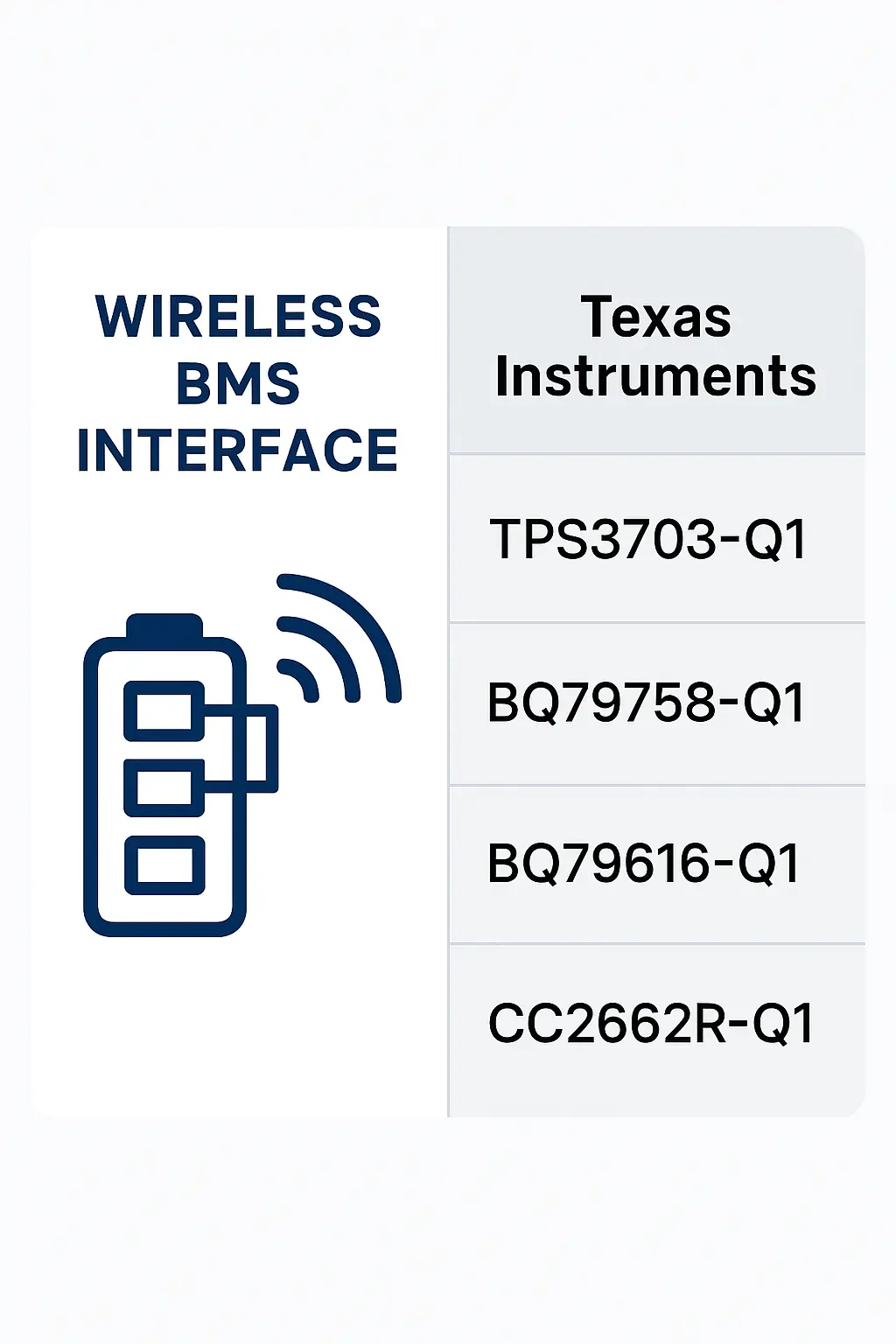Wireless BMS Interface
The Wireless BMS Interface is a key component within the Automotive Electronics domain, specifically under Connectivity & Telematics and Communication Interfaces. It enables wireless communication between the Battery Management System (BMS) and other vehicle systems or external devices. This interface plays a crucial role in modern electric and hybrid vehicles by facilitating real-time data exchange, enhancing vehicle performance, and improving energy efficiency.
The Wireless BMS Interface supports various communication protocols such as CAN, LIN, and wireless standards like Bluetooth or Wi-Fi, allowing seamless integration with onboard diagnostics, charging systems, and cloud-based platforms. It enables remote monitoring of battery health, state of charge, temperature, and other critical parameters, which is essential for predictive maintenance and safety management.
This technology is widely used in electric vehicles (EVs), plug-in hybrid electric vehicles (PHEVs), and advanced driver-assistance systems (ADAS). It supports features like over-the-air (OTA) updates, battery diagnostics, and integration with smart charging stations. By eliminating the need for physical connections, it also reduces wiring complexity and improves system reliability.
In addition to vehicle applications, the Wireless BMS Interface is applicable in industrial and commercial settings, such as electric buses, logistics vehicles, and energy storage systems. Its flexibility and scalability make it an ideal solution for next-generation automotive electronics, supporting the growing demand for connected and autonomous vehicles.
Overall, the Wireless BMS Interface enhances vehicle connectivity, improves battery management, and contributes to a more efficient and sustainable transportation ecosystem.
Details
Wireless BMS Interface

Related Parts
| Series Name | Description | Manufacturer Name | Attribute Description |
|---|---|---|---|
| Texas Instruments | 3-channel voltage supervisor with window monitoring, 2.5V to 5.5V supply, ±0.5% threshold accuracy, open-drain outputs, -40°C to +125°C operating temperature, 6-pin SOT-23 package. | ||
| Texas Instruments | 48V battery monitor, 16-cell, ±1.5mV measurement accuracy, integrated iso-UART/SPI, 12-bit ADC, supports daisy-chain, up to 1Mbaud comms, AEC-Q100 qualified. | ||
| Texas Instruments | 14-channel battery monitor, 65V max cell input, ±2mV measurement accuracy, supports daisy-chain communication, integrated analog front-end for voltage, temperature, and current sensing, operated via SPI interface. | ||
| Texas Instruments | 300mA low-dropout linear regulator, 1.4V to 5.5V input, fixed output options, ultra-low quiescent current, high PSRR, enable pin, thermal shutdown, small footprint package. | ||
| Texas Instruments | 3.3V fixed LDO, 1A output current, 2.7V to 5.5V input voltage, low dropout of 180mV, 0.001% typical line regulation, 50µA quiescent current, thermal shutdown and current limit protection. | ||
| Texas Instruments | 32-bit ARM Cortex-M4F MCU, 48 MHz, 704 KB Flash, 80 KB RAM, supports Bluetooth 5.2, Zigbee, Thread, low-power wireless, 7x7 mm QFN package, operates from 1.8 V to 3.8 V. |








.png?x-oss-process=image/format,webp/resize,h_32)










